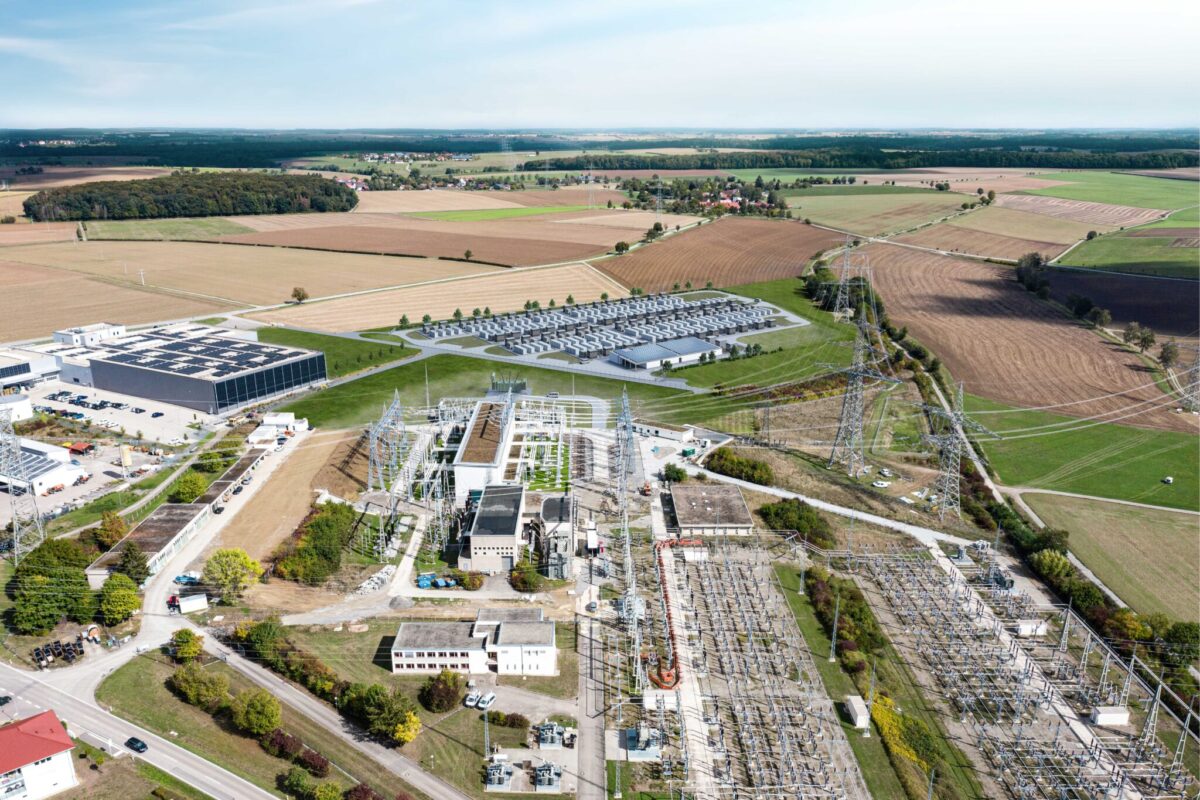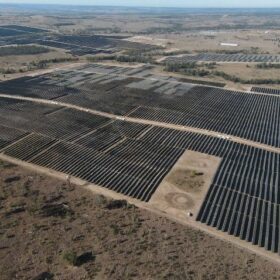From pv magazine Global
As pressure grows on transmission system operators (TSOs) to accommodate a rising share of renewables on grids, storage-as-transmission assets (SATA)– a relatively new and not widely known BESS application – could prove its worth by providing them with new types of flexibility.
Unlike “regular” big batteries, SATA projects are operated to mimic transmission line flows by injecting and absorbing power. In such applications, they can be used to bolster or even replace existing power lines, thus offering infrastructure planners a new, versatile solution for transmission transition.
With several SATA projects in their pipeline, Fluence has now launched Utrastack, its “highest performance energy storage product to date.” To meet the complex requirements of TSOs, the new system comes with a set of advanced features, including fast response times in under 150 milliseconds, NOC interface and IT security, and high availability of more than 99%.
With such capabilities, Ultrastack can deliver a broad variety of patent pending controls applications and services, including reactive power and voltage regulation, black start, virtual synchronous machine, synthetic inertia, primary frequency control, emergency power contribution, auto gen control, and power oscillations damping.
Fluence now has several SATA projects in its pipeline. In 2021, it deployed a 1 MW/1 MWh in Lithuania, which served as a proof-of-concept for storage being an integral part of the power transmission network and maintaining grid stability and reliability through emergency power, frequency and voltage control, and synthetic inertia response. This has been followed by the ongoing rollout of four 50 MW / 50 MWh SATA projects in Lithuania.
In Germany, Fluence is currently in the process of supplying TransnetBW, the TSO in the state of Baden-Württemberg, with the 250 MW Netzbooster (Grid Booster) project. The system will be tasked with increasing the efficiency of the existing grid infrastructure and easing congestions by providing backup capacity to maintain power system stability in the event of network failure.
There are two more 100 MW grid booster projects in the planning which Germany’s TenneT has not awarded yet. On top of that, an additional 750 MW are being proposed by German TSOs, according to the first draft of their bi-annual network development plan 2037/45 published last week.
Elsewhere in Europe, Red Electrica is planning a tender for a SATA project to increase the utilisation of interconnectors from the mainland to the Balearic islands. Meanwhile, a gigawatt-scale SATA pipeline is being formed in the UK where National Grid ESO procures grid-stability services, such as short circuit level and inertia, from privately-owned assets, under its Stability Pathfinder Phase 2 program.
Although the application of BESS as transmission assets is still in its fledgling stage, some market players and analysts see considerable promise in it. Research group S&P Global forecasts 17 GW/50 GWh of energy storage systems to be deployed globally through 2030 to enhance or defer investment into upgrading existing electricity network infrastructure.
This content is protected by copyright and may not be reused. If you want to cooperate with us and would like to reuse some of our content, please contact: editors@pv-magazine.com.








By submitting this form you agree to pv magazine using your data for the purposes of publishing your comment.
Your personal data will only be disclosed or otherwise transmitted to third parties for the purposes of spam filtering or if this is necessary for technical maintenance of the website. Any other transfer to third parties will not take place unless this is justified on the basis of applicable data protection regulations or if pv magazine is legally obliged to do so.
You may revoke this consent at any time with effect for the future, in which case your personal data will be deleted immediately. Otherwise, your data will be deleted if pv magazine has processed your request or the purpose of data storage is fulfilled.
Further information on data privacy can be found in our Data Protection Policy.